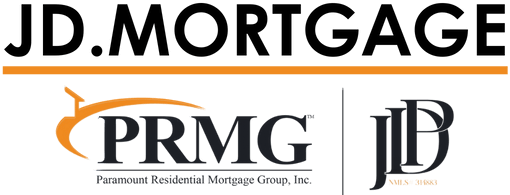
Cash‑Out Mortgage Refinance: A Clear Guide to Using Home Equity Strategically
Cash‑Out Mortgage Refinance lets you replace your current home loan with a larger one and receive the difference in cash at closing. This guide covers how cash‑out works, LTV limits, pricing and risk, taxes and documentation, when it’s smarter than a HELOC or second mortgage, and a practical step‑by‑step process—plus authoritative references (FHFA, HUD, VA, IRS) and internal resources on JD.Mortgage. See your cash‑out options
Cash‑Out Mortgage Refinance can fund renovations, consolidate high‑interest debts, seed investments, or create a financial buffer—when the math and timing are right. The key is to view equity as a tool, not an ATM. Below we walk through guardrails, alternatives, and a no‑nonsense process so you can pursue cash‑out with confidence. If you want the bigger picture on every refinance path, start with our national overview: Refinance and the full JD.Mortgage guide. Review scenarios
How Cash‑Out Mortgage Refinance Works
A Cash‑Out Mortgage Refinance pays off your existing mortgage and replaces it with a new, larger loan; you receive the difference in cash at funding. Lenders base the maximum loan amount on a percentage of your home’s appraised value (loan‑to‑value, or LTV). Conforming benchmarks are influenced by agencies like FHFA (loan limits) and standards published by Fannie Mae and Freddie Mac. Each program (Conventional, FHA, VA) has its own LTV/credit overlays. Check your parameters
What You Can Use Cash For (and Why It Matters)
Common uses include debt consolidation, remodels, education, or capital for business/investments. Use of funds can affect pricing, documentation, and potential tax treatment. For high‑level tax guidance on interest deductibility and home improvements, consult the IRS and your tax professional. Our role is to model outcomes—monthly payment, total interest, payoff speed—so you’ll see the trade‑offs clearly. Model outcomes
Cash‑Out LTV and Credit: The Guardrails
Maximum LTV, credit score thresholds, and pricing adjustments vary by program and occupancy. As a quick framework:
- Conventional: LTV caps are generally tighter for cash‑out than for rate‑and‑term. Expect stronger credit requirements and potential pricing adds. See references at Fannie Mae / Freddie Mac. Compare conventional
- FHA: May allow cash‑out at different LTV tiers with mortgage insurance considerations. Review FHA resources at HUD. See FHA paths
- VA: VA cash‑out can be flexible for eligible borrowers; start at VA.gov. Separate from IRRRL (VA streamline), cash‑out follows its own rules. Explore VA cash‑out
- Jumbo / Investment: Expect stricter LTVs, reserves, and pricing adds. Strategy matters: consider single jumbo vs. first‑plus‑second structures. Compare jumbo structures
Pricing, Payment, and Break‑Even: How to Judge the Win
We evaluate a Cash‑Out Mortgage Refinance on three axes: payment impact now, total interest over horizon, and ROI on how you’ll use the equity. For debt consolidation, we compare your current blended interest and payoff schedule versus the new refi structure. For remodels, we estimate value impact and liquidity. Break‑even (total costs ÷ monthly improvement) is only the start—opportunity cost and risk tolerance belong in the decision too. Run the math
Cash‑Out vs. HELOC vs. Second Mortgage
Sometimes, a full cash‑out refi isn’t the best tool. If your first‑lien rate is excellent, a HELOC or Second Mortgage might preserve it. If you want one fixed payment and payoff date, cash‑out can win. We’ll compare monthly payment, variable‑rate exposure, closing costs, and total interest so you can choose the right lever. See side‑by‑side
Documentation and Appraisal: What to Expect
Expect standard income/asset verification unless you’re in a streamlined government path (which typically doesn’t allow cash‑out). Appraisals are common to confirm value and LTV; some scenarios may receive waivers or alternatives, but plan for a full valuation. We’ll prep documentation upfront to avoid surprises and keep underwriting efficient. Review documentation
Risks and Safeguards: Use Equity Deliberately
Borrowing more than you need or using funds without a payoff plan can increase long‑term costs. Rate/term alignment and horizon matter—taking cash today at the expense of future flexibility isn’t always worth it. We build “guardrails” into scenarios: maximum monthly target, reserve goals, and a plan for variable‑rate debt if applicable. Set guardrails
Step‑by‑Step: Cash‑Out Mortgage Refinance Process
- Discovery & goals: Amount needed, purpose of funds, horizon, and risk tolerance. Start the review
- Scenario modeling: Cash‑out vs. HELOC vs. second; payment and total interest; payoff plan. Compare scenarios
- Documents & credit: Right‑sized checklist to support underwriting. Check requirements
- Valuation: Appraisal, waiver, or alternative as eligible. Confirm valuation
- Underwriting: Address conditions quickly; keep timeline tight. Move forward
- Funding: Receive cash at closing; first payment usually due the second month after funding. Plan first payment
Taxes & Record‑Keeping
Cash‑out proceeds themselves aren’t income, but interest deductibility depends on IRS rules and the use of funds. Maintain receipts and documentation for remodels or qualifying uses. For current rules, review the IRS, and coordinate with your tax professional. Organize records
Special Cases: FHA, VA, and Jumbo Cash‑Out
Program choice drives LTV, pricing, and MI/funding‑fee implications. FHA cash‑out can help when credit depth is limited, but MI matters. VA cash‑out can be powerful for eligible borrowers; study the differences at VA.gov. At high balances, jumbo cash‑out may call for stronger reserves and tighter LTVs—sometimes a first‑plus‑second beats a single jumbo. Tailor by program
When Cash‑Out Makes the Most Sense
- You’re consolidating high‑interest balances with a disciplined payoff plan.
- You’re funding value‑add improvements with realistic ROI expectations.
- Your first‑lien rate isn’t worth preserving, or the new blended structure still wins.
- You prefer one fixed payment to variable‑rate exposure.
If your first‑lien rate is stellar, we’ll test second‑lien options before replacing it. Optimize the structure
Alternatives You Should Compare
- HELOC — Flexible draws, interest on what you use; variable rates.
- Second Mortgage — Lump‑sum, fixed payment; preserves first‑lien rate.
- Conventional Refi — For strong credit and MI removal opportunities.
- FHA Refi — Access equity with MI considerations.
- VA Refi — VA cash‑out for eligible borrowers; IRRRL is non‑cash‑out.
We’ll show the math on each side so you’ll see the winner in black and white. Request comparisons
FAQs: Cash‑Out Mortgage Refinance
How much cash can I take out?
It depends on your program and LTV cap relative to the appraised value. Conventional caps are typically tighter for cash‑out than rate‑and‑term; FHA/VA have their own rules. Check FHFA for loan limits and see Fannie Mae/Freddie Mac, HUD, and VA for baseline guidance. Open FHFA
Is a HELOC or second mortgage better than cash‑out?
If your first‑lien rate is excellent, preserving it with a HELOC or closed‑end second can win. If you want one fixed payment and payoff date, a cash‑out refinance may be better. We compare payment, total interest, and risk exposure to decide. See comparisons
Will cash‑out affect my taxes?
Cash‑out proceeds aren’t income; interest deductibility depends on current IRS rules and how funds are used. Keep records and consult your tax professional. Open IRS
How fast can a cash‑out refi close?
Timelines vary by program, appraisal turn‑times, and underwriting conditions. A well‑prepared file typically moves in a few weeks; we front‑load documentation to avoid stalls. Prepare your file
Does cash‑out raise my rate a lot?
Cash‑out has pricing adds versus rate‑and‑term. We’ll quote both, plus HELOC/second options, so you can choose the most cost‑effective structure for your goal and horizon. Review quotes
Explore Related Options Before You Decide
- HELOC — Revolving line secured by home equity; interest on what you use.
- Second Mortgage — Fixed lump‑sum second; preserve a great first‑lien rate.
- Conventional Refinance — Compare MI removal and pricing adds.
- FHA Refinance — Consider cash‑out vs. streamline trade‑offs.
- VA Refinance — VA cash‑out for eligible borrowers; IRRRL is non‑cash‑out.
Want a plain‑English comparison that aligns with your timeline and tolerance for variable rates? Request tailored scenarios
All Loan Programs We Offer (Quick Reference)
Cash‑out is one option—we also support a full lineup. Explore each program for details, then jump to the top to request comparisons that match your goals.
- Conventional — Standard fixed/ARM options with MI removal potential.
- FHA — Flexible credit; streamline and cash‑out paths.
- USDA — Eligible rural areas; Streamlined Assist (non‑cash‑out).
- Jumbo — Over conforming limits; cash‑out and first‑plus‑second strategies.
- VA (No Min Credit Score) — VA cash‑out and IRRRL for eligible borrowers.
- HELOC — Revolving line for flexible access to equity.
- Second Mortgage — Fixed lump‑sum second lien.
- Reverse — For homeowners 62+; HECM purchase/refi.
- Construction Loans — Build/renovate with structured draws.
- Non‑QM — DSCR, Bank Statement, ITIN, Asset Depletion.
- Loan Options — Includes Down Payment Assistance overview.
- Mortgage Process — What to expect at each step.
- Mortgage Calculator — Estimate payments quickly.
- Purchase — If you’re moving instead of refinancing.
- Main — Learn about the JD.Mortgage team at PRMG.
- Contact / General Inquiry — Ask questions or request a side‑by‑side scenario review.
For a complete guide to all refinance options, see our Mortgage Refinance Guide.

